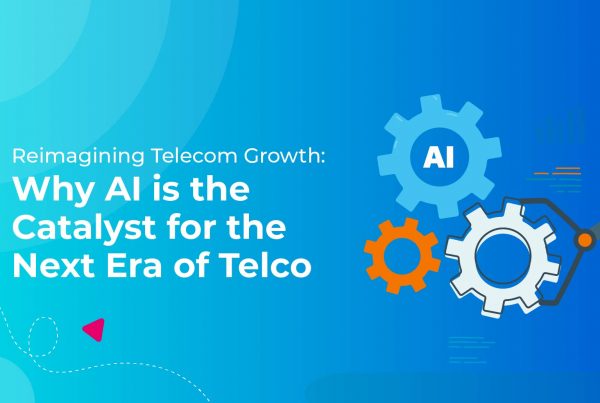For the modern executive and senior leader of an MNO, managing and monitoring the lifecycle of electronic vouchers – from voucher generation to distribution – is a topmost priority. Having efficiency, swiftness, and responsiveness in the voucher top up process is critical, especially since the tech-savvy customers today no longer want to deal with the hassle of lags or delays.
There is enormous data that shows how consumer behavior has evolved in favor of increased digitzation, particularly in the consumption of telecom services. This makes it imperative for MNOs and telecom groups in developing markets to shift gears towards digital distribution channels like digital voucher management to bridge the gap between subscriber needs and customer value delivery.
The Telecom Revenue-Growth Newsletter
Our coveted monthly newsletter compiles vetted insights on creating effective sales and distribution chains that fulfil telcos' revenue goals. That, and a lot more.
Here’s a list of what will be covered in this blog:
Leveraging digital tools to achieve efficiency
A 2021 GSMA state of the industry report predicts an inclusive digital future for the industry as 2020 alone accounted for 1.2 billion registered mobile money accounts and $500 million digitized by agents globally. The report also shows that airtime makes up for 4% of the $23 billion value circulating in mobile money in 2020.

These trends indicate that digital engagement is rising, especially in the context of finance and commerce. With these trends largely concentrated in developing regions like India, China, and Latin America telecom operators have a great opportunity to unlock the true potential of digital solutions within their distribution network.
In response to the pressure from various market forces like evolving customer expectations and high competition, MNOs must reevaluate their logistical processes and operations. This is especially relevant for MNOs in today’s’ fast-paced environment as they grapple with shrinking profit margins and rising operating costs. Due to this, it is imperative for them to adopt a data-driven approach and to provide product offerings that are flexible, market-responsive, and user-centric.
Transitioning from the traditional scratch card system to buying airtime online through electronic vouchers, or e-vouchers, is an obvious choice as it empowers telcos to decrease the dependency on the physical means of distribution. Additionally, the digitization of the distribution chain with e-vouchers would not only reduce costs for MNOs but also enable them to penetrate previously untapped and unreachable markets.
Roadblocks in digitizing voucher management process
While it is important for an MNOs to bank on these growth opportunities for expanding into new revenue streams, it is also imperative that the digital transformation is done at an optimal pace. Maximizing revenue through digitization of business operations or processes comes at the cost of increased OPEX and CAPEX. In order to keep pace with the highly competitive and dynamic environment, MNOs need to optimize their distribution and logistics costs as well.
A successful balance between these two success metrics has to be maintained. However, it can be challenging when the mobile subscriber base is expanding, that too with rapidly evolving needs. To really deliver on new consumer choices, telecom executives and senior leaders need an optimal strategy that allows them to meet customer expectations and keep pace with the market trends, all while their costs.
How do electronic vouchers work?
The voucher management ecosystem comprises of:
- A telecom operator
- A distribution network
- Multiple access points or channels through which resellers request and receive a response
- A processing system to validate and respond to queries
- A customer willing and able to purchase the voucher

The subscribers gets their accounts recharged by requesting a reseller to top-up their account through an electronic voucher. The reseller then forwards this request to the telecom operator via an authorized channel like USSD, web channel, or SMS for the desired voucher denomination.
After validation, the system approves the reseller’s request and delivers a code via SMS to the subscriber or pushes a printable voucher to the reseller that the reseller prints and presents to the subscriber. The resellers may use a wireless POS terminal with a print functionality to download the voucher, print it, and sell it to the subscriber. Alternatively, the subscriber receives a voucher pin code directly on the mobile that they can use to top-up their account.
Benefits of digital voucher management

Cost-efficiency
Although e-vouchers mimic the behavior of scratch cards, they are a faster, easier, and a more cost-effective means of airtime recharge. The entire process of printing, distributing, and storing of scratch cards is replaced by digital voucher generation and voucher distribution.
As opposed to traditional scratch cards, the MNO has no need to print and distribute the vouchers. Instead, the resellers are able to print these vouchers or provide a code to the subscriber depending on what the subscriber prefers. With the distribution of vouchers being done electronically, MNOs eliminate the associated costs of physical distribution making the process far more lean and hassle-free.
Better control and visibility
E-vouchers also empower service providers to have enhanced control over their distribution chains with a digital voucher management system. A competent voucher management system ensures complete control over the end-to-end distribution of vouchers to resellers and provides an unparalleled user experience to customers. It provides on-ground availability of convenient mobile recharge and payment mechanisms supporting a wide range of channels.
With this approach, telecom executives have greater visibility into the activities of resellers and can trace the inventory levels at any point while enabling value recharge for end-users anytime, and anywhere.
Through digital distribution, the process of delivering services to the subscribers is also exceptionally flexible and convenient for both the operator and its resellers. It equips the telecom operator with real-time control over the flow of value and the ability to sell pre-generated vouchers through their network of resellers. At the same time, it empowers resellers to maximize the value of promotional campaigns and achieve real-time bonuses and commissions from operators for their sales.
Improved flexibility for customers
From the customer/subscriber’s perspective, they have greater flexibility in terms of recharge denominations that cater to their needs. This feature is commonly referred to as voucher-on-demand and offers them a huge convenience of buying the exact amount that they want thereby boosting their brand loyalty and reducing the likelihood of churn.
Final thoughts
E-vouchers are critical for MNOs to help them transition their subscribers to digital, convenient, and less costly methods of buying products like airtime, and more. They allow MNOs to establish, manage, and maintain a consolidated network of electronic payments which revolutionises the way their products are delivered to the market. Above all, it’s crucial to stay on beat with developing consumer behavior that’s largely shifting in favor of digital distibution and consumption – something all modern and successful telecom operators are out to do come 2023.


